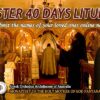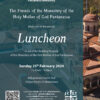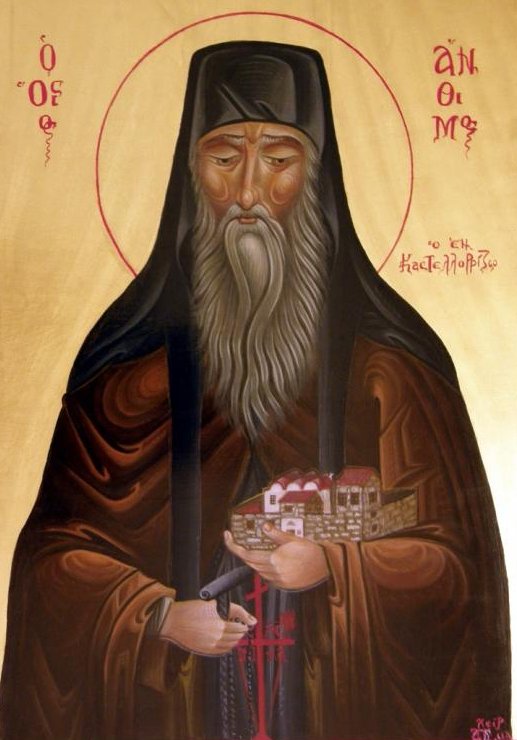
St. Anthimos, son of Ioannis and Antzouleta Kourouklis, was born in Cephalonia in 1717, with the name Athanasios. At the age of seven he became blind as a result of a smallpox epidemic. His devout mother prayed for his healing and asked their local parish priest to serve forty liturgies (“sarantaleitourgo”) for her son’s healing. At the fortieth Divine Liturgy, as the priest said: “With the fear of God, with faith and love draw near,” Athanasios cried out that he could see the priest’s red vestments and chalice. He had recovered sight in his right eye.
For a time, Athanasios followed his father’s occupation as a seaman. However, he soon abandoned this to devote himself entirely to God and the ascetic life and joined the nearby Monastery of St. Paraskevi at Lepeda. At the age of 20 he was tonsured a rassophor monk, receiving the name Anthimos in honour of the Abbot. He then lived on Mt. Athos, where he was tonsured a Great Schema monk at Iveron Monastery in 1747 at the age of 30. Not long after and only a few years before St. Kosmas the Aitolos, God called St. Anthimos to be a missionary to revitalise the spirituality of the Greek people, primarily on the Aegean islands under Turkish occupation.
At some point he went blind again, and soon thereafter had a vision: he was praying for the restoration of his sight before an icon of the Theotokos when two young men in radiant garments appeared and led him to the Mother of God herself, who told him, “Depart, for your continual prayer that I restore your sight is not profitable to you.” But the two young men pleaded for him, and the Theotokos said, “Anthimos, because of your great piety and many prayers, I will restore your sight in part, but do not forget that, having gained temporal vision, you can lose that which is eternal.” Thereafter, though Anthimos was almost completely blind, he could dimly discern the outlines of objects; but in compensation he was granted the gift of spiritual insight as we will see.
Now almost completely blind, he began his missionary work on Chios, spending a year there preaching the Gospel while living in great ascesis, eating only a little bread and sleeping on the church floor. He then went to Paros where through his prayers he saved people aboard a ship about to sink in a storm. He then spent time on the neighbouring islands of Sifnos, Antiparos, Naxos and Ios.
St. Anthimos on Castellorizo
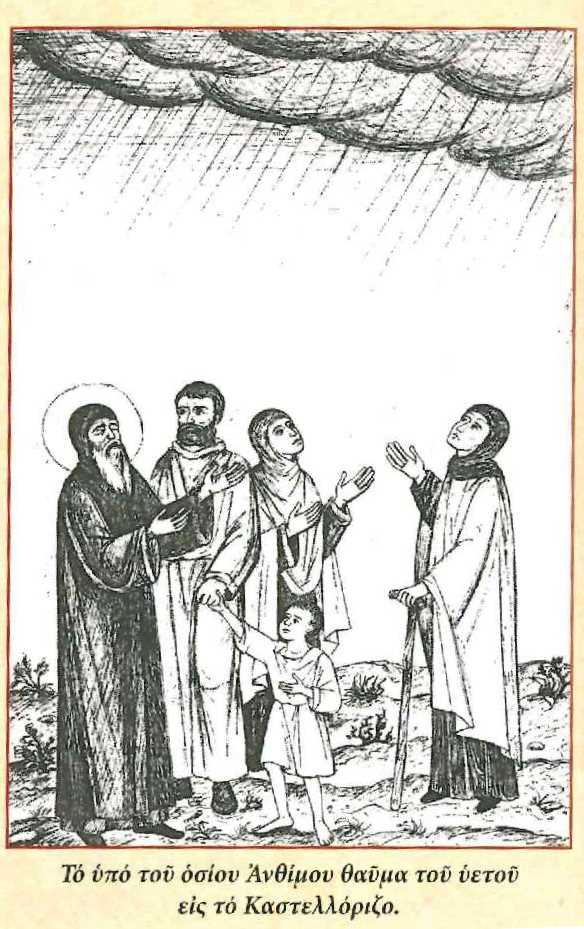
In 1759, St. Anthimos embarked on a pilgrimage to the Holy Land. On his return voyage to Greece he encountered stormy seas which led him to another island in the Aegean, this time in the Dodecanese, the island of Castellorizo.
The Cazzies warmly received him, especially when they discovered that he was an Athonite monk and a pilgrim to the Holy Land. While St. Anthimos found the locals to be simple and guile and he catechised them with his divine preaching and through his radiant example. He desired to establish a monastery on the island. However, the material means were lacking especially as the island was amid a two-year drought. The locals and their animals were suffering and in danger of dying from a lack of food and water. St. Anthimos felt their pain and struggle. He wanted to give them courage and strength, so he prayed aloud in front of them with his hands raised entreating the Lord on their behalf. Suddenly, the heavens opened, and rain began falling, so much so that the drought was broken. In thanksgiving for this miracle, the locals helped build the island’s first monastery. The saint chose a location above the islands’ town, on fertile plateau and on the site of remains of an old chapel of St. George.
In addition to the main church, the saint along with the locals, built monk’s cells, an abbot’s cell, surrounding wall, as well as bringing suitable fathers to run the monastery. St. Anthimos remained on Castellorizo until construction of St. George Monastery of the Mountain (tou Vounou) was completed and consecrated in 1760. In 1761, the monastery was made Stavropegic by Ecumenical Patriarch Ioannikios III, in return for 2.5kg of beeswax candles.
They also built an underground crypt under the Catholicon dedicated to St. Haralambos the protector of saint’s hometown of Lixouri. This is also where can be found the only spring on the barren island which many believe started with the miraculous rain that broke the drought.
Following the consecration of the monastery, the saint travelled to the island of Astypalaia where he founded a convent dedicated to Panagia Portaitissa and requested an icon be copied from the original in Iveron Monastery, Mount Athos. St. Anthimos stayed here for 7 years, his longest stay on his missionary journey. Here he worked many miracles, including ridding the island of poisonous snakes and to this day is known as the patron saint of the island.
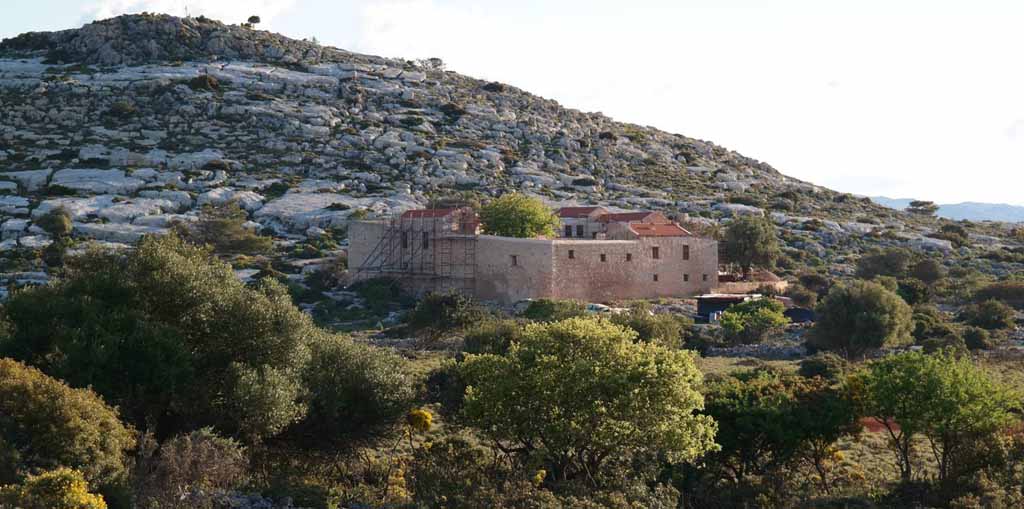
In 1767, Cephalonia and his hometown of Lixouri were hit by a devastating earthquake. This along with a defamatory campaign against him by some envious locals of Astypalaia lead his footsteps back to his monastery of St. Paraskevi in Cephalonia in 1769 which was by now in ruins. He salvaged and rebuilt it, turning it into a convent and populating it with devout nuns.
In 1770, following the restoration of both buildings and souls in Cephalonia, he continued his journeys, this time to Sfakia of Crete founding the Holy Monastery of St. Anthony the Great and became known in the area as a wonderworker. Among the miracles he performed was restoring sight to a blind woman and blessing a barren woman who later gave birth. In 1773 he visited Libadi of Kythera and founded the monastery of St. John the Forerunner as well as dedicating a chapel to his spiritual guide and the patron of his homeland, St. Gerasimos. In 1775 he moved on to Sikinos and founded the Monastery of Zoodohos Pege (Life-giving Spring).
By now he had created six monasteries, that were a beacon of hope and light during especially dark days for the people of Greece.
In 1782, while living a peaceful and ascetic life back at his base in Cephalonia, he received three letters from Mani, imploring him to resolve a conflict that had arisen amongst them. He embarked on this journey aboard a small ship which had a stopover in the Peloponesean village of Kelbasio. Upon arrival local thieves however boarded the ship, terrifying and threatening the passengers. Nonetheless, the man of God calmed them by his faith, rebuked them and instructed them in the Christian way of life. The vessel was set free to continue its journey to Mani, but the saint suddenly told the master of the vessel to change course, saying:
“God’s will is not that I concern myself with it [the mission he had undertaken], but that I go back and die in my monastery.”
On returning, he fell ill with jaundice and called his spiritual children to him, saying:
“My children, the hour has come for me to go where the Lord ordains. Death is the common lot of us all and is nothing to be afraid of. It is important rather to do your best to keep your monastic vows which you proclaimed when tonsured with the Great Schema. The one thing necessary in this life is to please God and save your souls.”
Having said these things to his spiritual children, he fell asleep in peace on September 4, 1782 at the age of 64.
In 1800 his relics were exhumed and on 30 July 1974 he was formally recognised a saint by Patriarchal and Synodal Decree. His body is available for veneration at the place of ascetism and entombment. While chapels are now dedicated to him in Kalymnos, Sifnos and Astypalaia.
Despite his blindness, St. Anthimos took up a life of missionary work as a “blind pilgrim monk” that took him throughout Greece and especially the islands. Traveling from place to place he preached the Gospel, performed countless miracle and founded at least 6 monasteries. Throughout his amazing labours he maintained a life of the most severe asceticism. He is known throughout Greece, especially in the areas he visited and his considered a protector of snakes, scorpions and other poisonous animals.
Photos of the recently renovated St George Monastery on Castellorizo.

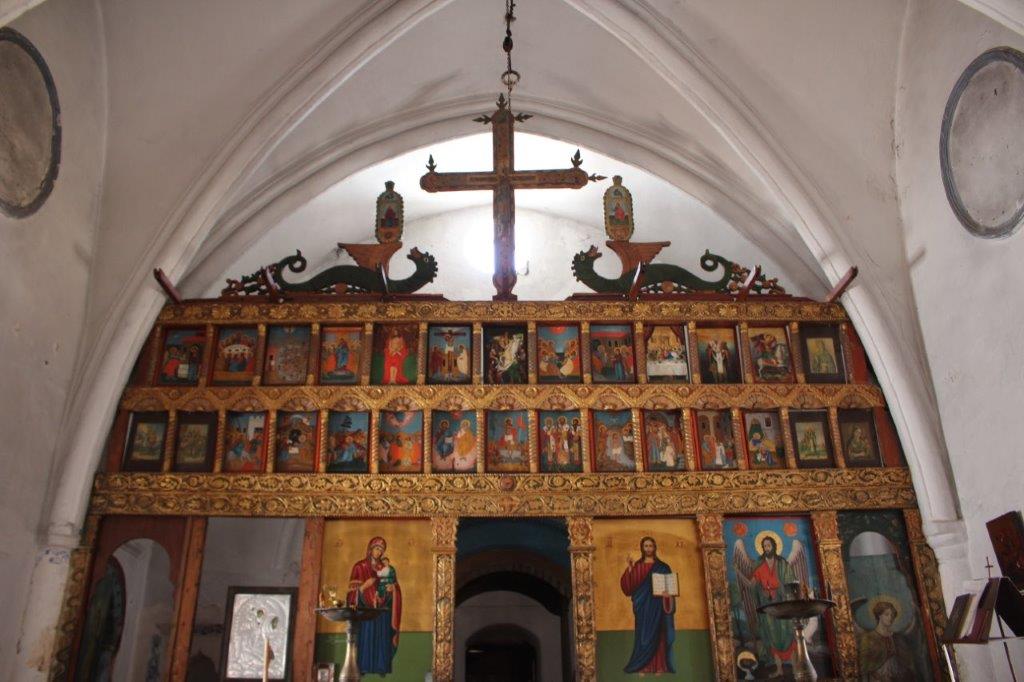


Feast Day September 4.
*Apolytikion in Tone Three*
The offspring of Palle and Kefallonia’s torch, divine builder of the Monastery of Lepedes, we cheerefully praise Anthimos who defeated the adversary with asceticism. Having received the gift of healing from the Lord, fervently intercede for our salvation.
*Kontakion in Tone Three*
Today, with a grateful spirit, the island of Kefallonia celebrates with the Monastery of Lepedes, and also invites the islands of the Cyclades. The islands rejoice because they received as great treasure your all-holy tomb, Anthimos, companion of the righteous.
*Megalynarion*
The renowned offspring of Lixouri, the pride of ascetics and the example of monks, divine builder of the Monastery Lepedes, let us praise the thrice blissful Anthimos.

